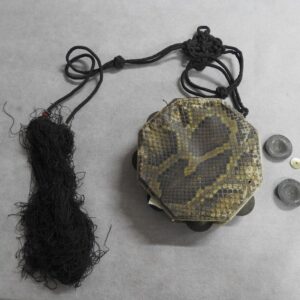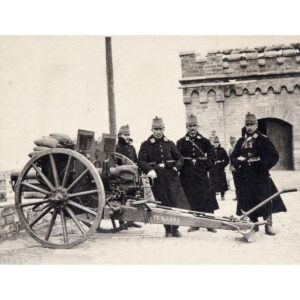Coin wuzhu
Banliang 半兩 coins, introduced as standard currency by the founder of the Qin dynasty (221–206 B.C.) and the first Chinese emperor Qinshi Huang 秦始皇 (reigned 221–210 B.C.), remained in use for a century, throughout the ascendancy of the Western Han dynasty (206 B.C.– A.D. 8), which followed the fall of Qin. During this period, they steadily decreased in size and weight, soon weighing only four or five zhu 銖 (about 3.25 grams). Despite all this, the monetary economy was already fully developed and in full swing by this time, so in 119 B.C. Emperor Hanwu 漢武 (reigned 141–87 B.C.) replaced the banliang coins with a new standard that initially appeared in two denominations, the sanzhu 三銖 (three zhu) and wuzhu 五銖 (five zhu). The coin on the photo is a wuzhu coin, as the seal script on its obverse reveals. Thus, its value or weight corresponds to 3.25 present-day grams. Coins of this type were ... more
Banliang 半兩 coins, introduced as standard currency by the founder of the Qin dynasty (221–206 B.C.) and the first Chinese emperor Qinshi Huang 秦始皇 (reigned 221–210 B.C.), remained in use for a century, throughout the ascendancy of the Western Han dynasty (206 B.C.– A.D. 8), which followed the fall of Qin. During this period, they steadily decreased in size and weight, soon weighing only four or five zhu 銖 (about 3.25 grams). Despite all this, the monetary economy was already fully developed and in full swing by this time, so in 119 B.C. Emperor Hanwu 漢武 (reigned 141–87 B.C.) replaced the banliang coins with a new standard that initially appeared in two denominations, the sanzhu 三銖 (three zhu) and wuzhu 五銖 (five zhu). The coin on the photo is a wuzhu coin, as the seal script on its obverse reveals. Thus, its value or weight corresponds to 3.25 present-day grams. Coins of this type were minted in different varieties and used as the basic monetary unit for the next 700 years until the Tang Dynasty (618–907). (MG)







































Do you have a comment or additional information about the subject?